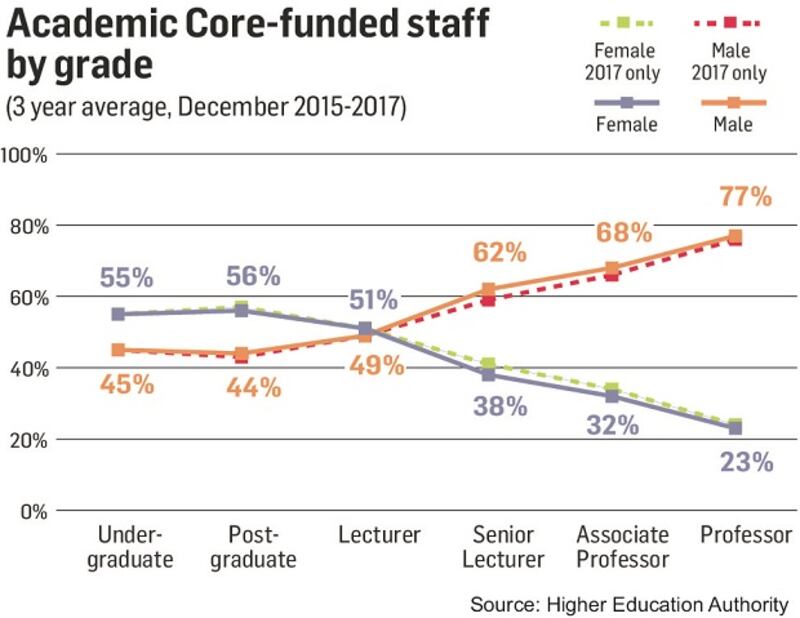Women remain hugely underrepresented in the senior levels of Irish universities despite policies aimed at promoting greater gender equality, new figures show.
They are also far more likely to earn less, with men accounting for the vast majority of best-paid posts in higher education.
The figures are contained in a Higher Education Authority report which profiles the performance of third-level institutions in tackling gender gaps. While half of all lecturers in universities are female, these numbers fall dramatically at higher grades such as associate professor (32 per cent) and professor (23 per cent).
There has also never been a female president since the establishment of the first Irish university more than 425 years ago.
The report notes there have been “marginal improvements” of between 1 per cent and 2 per cent in addressing the underrepresentation of women at senior levels in academia over the past year.

It also points to “positive steps” being taken by institutions to enhance gender equality at governance and management level. For example, five out of seven universities have achieved a minimum of 40 per cent gender balance on their executive management committee compared to zero out of seven in 2016.
The gender gap in other areas, however, remains stark.
Some 70 per cent of those earning in excess of €106,000 are men at university level, while it rises to 83 per cent in institutes of technology.
Sharp differences
There are also sharp differences in the proportion of woman at senior academic grades across individual institutions. At university level, NUI Galway has the lowest proportion of female professors (12 per cent), followed by UCC (20 per cent). The best performers are UL (31 per cent), followed by DCU and Maynooth University (30 per cent).
The authority’s report notes that there is a very slow rate of change in addressing gender imbalance, particularly at professor level, internationally in higher education.
A gender quality taskforce has been set up by Minister of State for higher education Mary Mitchell O’Connor, which is seeking ways to accelerate change. In a statement she said these latest figures showed institutions were only achieving “very small steps” in addressing gender inequality.
“We need a strong commitment, and leadership from the presidents must be demonstrated in this regard if real progress is to be made,” she said,
Recent policy changes also mean that third-level institutions risk funding being withheld if they fail to introduce mandatory gender quotas to increase the number of women in senior positions.
In addition, they risk losing out on research funding if they do not meet diversity thresholds. For example, all higher education institutions must secure a "bronze" award under the Athena Swan gender equality initiative to qualify for research funding from 2019.
Applications
While all seven of the universities now hold these awards, institutes of technology are in the process of preparing applications.
Graham Love, the authority's chief executive, said institutions which invest in gender equality help reach their full potential and "better meet the challenges of the future".
Joan Donegan, general secretary of the Irish Federation of University Teachers, said that while the latest figures showed very gradual progression on equality, huge inequalities remained. She called for much more robust progress .
“The forthcoming report from Mary Mitchell O’Connor will be very important in this regard,” she said.

















